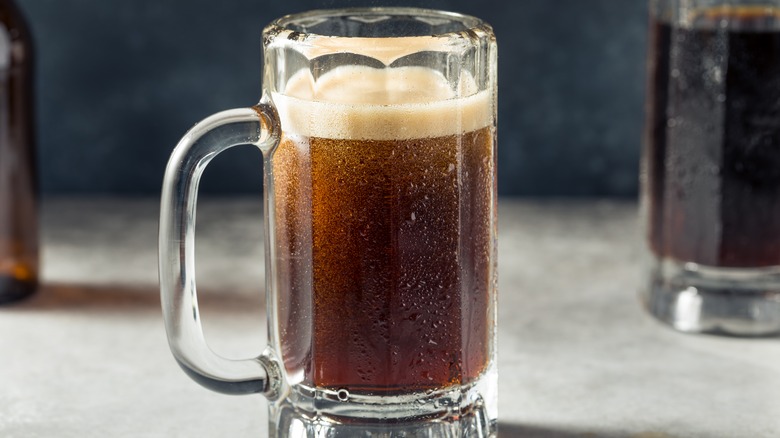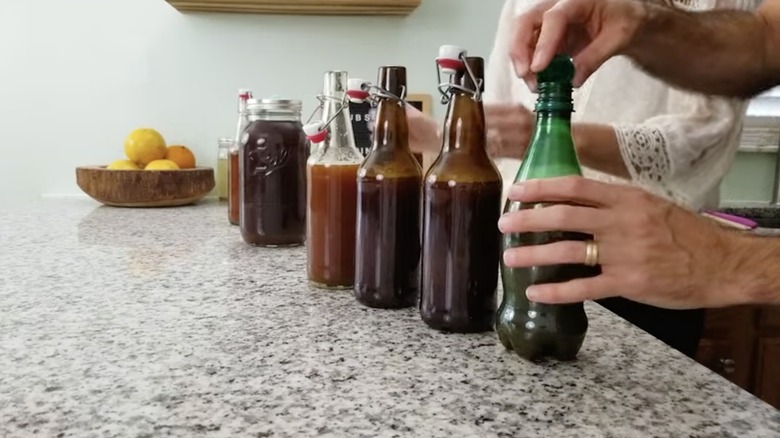Making Your Own Root Beer Is A Lot Easier Than You Might Think
Long before root beer brands like A&W graced the shelves of supermarkets, actually long before supermarkets were even a thing, 19th-century farmers were brewing their own root-based beverages for casual consumption. They were experimenting with different blends of tree bark and flavorings like juniper berries, vanilla bean, and licorice. In fact, according to Renegade Brewing, modern-day root beer is simply a variation of age-old beverages made from herbs, berries, and bark.
While some sources, including Renegade Brewing, tie today's root beer to fermented beverages produced in Sumeria more than 6,000 years ago, let's focus on more recent history and recipes. Sprecher Brewery traces root beer's more modern roots to teas and tinctures brewed by North America's indigenous peoples using ingredients found in nature like roots, barks, berries, and flowers flavored with sassafras, wintergreen, and sarsaparilla. The teas didn't taste great, but the natural remedies were useful in the treatment of maladies like allergies and inflammation.
When Europeans arrived on the continent, they took notice and started experimenting with their own root-based beverages, incorporating the medieval tradition of small beer. According to Anchor Brewing, Europeans developed small beer, a low-alcohol fermented beverage made from a blend of malted and unmalted grain, as an alternative to the unsanitary water supply. It served the same purpose in the colonies — settlers consumed the beverage they named root beer as a source of hydration, not a means to drunken revelry (via Sprecher Brewery), passing carefully guarded recipes from generation to generation.
The waiting is the hardest part
Through generations, families tweaked their secret recipes developing better-tasting blends they increasingly enjoyed at leisure rather than as remedies. Root beer remained a home-brewed beverage well into the 19th century when purveyors began selling popular blends, spurring the introduction of pharmacy-based soda fountains where root beer flowed initially as a pharmacist-blended remedy (via Pharmacy Times). At about the same time, according to The Inventors, a Philadelphia pharmacist by the name of Charles Hires was finetuning a blend of 25 herbs, berries, and roots to flavor carbonated water.
He began bottling and selling it as root beer in 1876, according to Grit, contributing to the decline of home brewing. It was just easier to buy than make. The thing is, root beer is actually still pretty easy to make at home and it's simple to customize. According to Serious Eats, the hardest part is sourcing the tree bark. The fun begins after that when it's time to start experimenting with various spices, herbs, and flavors.
Homebrew Academy says there's no "right" way to make root beer. There is a catch, though. The U.S Food and Drug Administration banned sassafras, the traditional root used in old-fashioned recipes, in 1979 (via Everyday Health) citing concerns about its carcinogenic properties. The workaround? Artificial sassafras flavoring. In addition to flavorings, you'll need water, a sweetener, ale yeast — and time. Prep takes less than an hour. Fermentation can take up to 60 hours. The waiting is definitely the hardest part.

